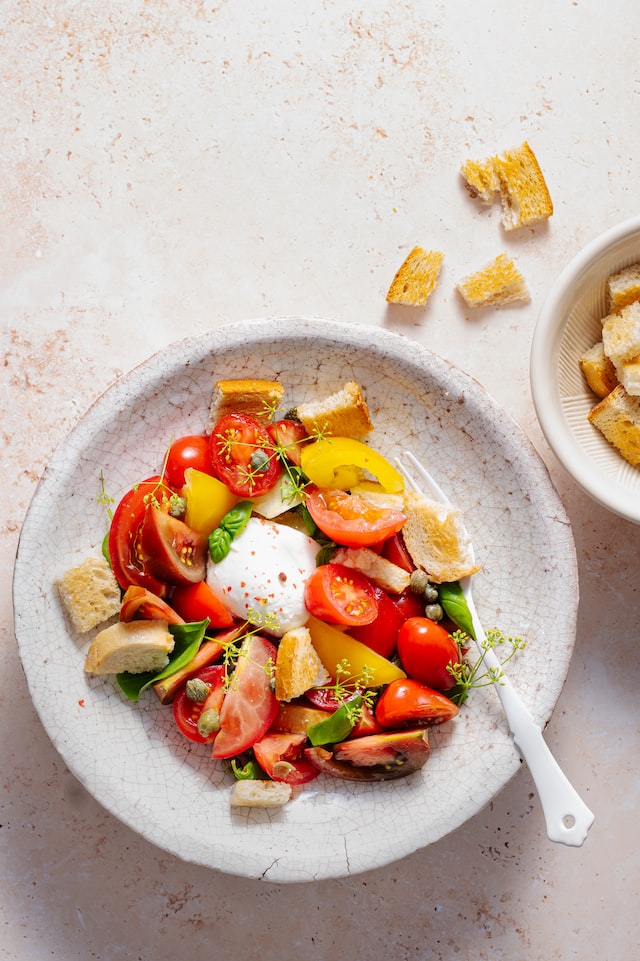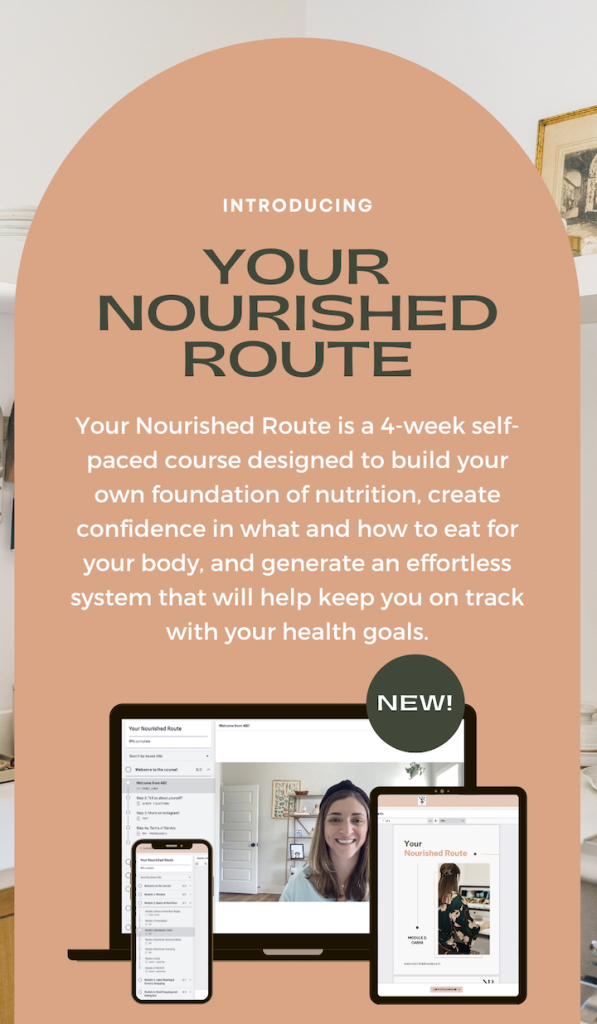By now, you’ve taken our Nourished Quiz “What’s Your Eating Personality?” If you haven’t yet and are interested in taking this free quiz, check it out here! It takes less than a minute to complete and will provide you with:
- Clarity in what type of eater you are
- Steps to feeling confident in your eating habits
- Guidance on how to eat with balance

Now if you’ve taken it and you’re an Emotional Eater, then keep reading!
As an emotional eater, you usually use food as a vehicle for your emotions. You use it to cope with emotions, stress, loneliness, or anger, and it becomes your safe place or automatic action when dealing with these emotions. You eat for these reasons instead of physical reasons like hunger. The emotions you felt prior to eating turn into feelings of guilt and shame for how much you just ate. Today, we’ll discuss 4 of the characteristics of an Emotional Eater. Then, we’ll explore next steps to finding more purpose when it comes to your eating habits, how to manage your emotions in ways outside of food, and ways to incorporate balance in your eating habits
The 4 characteristics of an Emotional Eater:
- You eat for emotional, not physical, reasons
Instead of eating when you’re hungry, you eat when you are feeling a certain type of way. Emotional hunger comes on quickly and usually makes us crave certain types of food that provide us with comfort. When you feel physically hungry, you’re more likely to eat any type of food like fruits, vegetables, whole grains, etc. But when emotional triggers arise, you’re usually going for a certain type of food (dessert, a salty snack, etc) that provides you with the rush that you need.
- You mindlessly eat
When an emotional rush comes on, you tend to be mindless and not pay attention to your food. This usually results in #3 (see below). You eat fast, mindlessly scroll through social media while eating, or eat while binging your favorite show. Sometimes, you barely breathe while eating. You may be standing around your kitchen island and not relaxed while eating.
- You usually finish an entire container of food at once
Before you know it, you’ve usually eaten an entire bag of chips, or an entire pint of ice cream. You don’t even know where the food went, or how you ate the food so quickly. Similar to #2 above, you never paid attention to the actual food or pleasure that you were receiving from it.
- You often feel guilt, shame, or regret after eating
When you eat to satisfy emotions, you’re more likely to feel guilt, shame, or regret after eating. This is because you’ve likely done so mindlessly (see #2,) or have finished the entire container of food (see #3 above). You know that deep down, you didn’t actually want the food and that the food didn’t satisfy your nutritional needs.
So there you have it, the 4 characteristics of an Emotional Eater! As you might tell, food is only a temporary solution, and won’t fix any of the feelings that you have. Long term, it’s important to find other ways to cope with emotions.
Now, are you curious to how you can continue to support yourself in creating and maintaining balanced eating habits?
We’ll walk you through a mindfulness exercise that our students in our Your Nourished Route self-paced program learn to build consistent eating habits that are stress-free.
One of the skills that you can (and should,) learn to incorporate into your everyday routine is to be more mindful about your eating habits and check in with yourself more frequently. This can help you to make more intentional choices when it comes to your eating habits and find more balance in your food choices.
When it comes time to eat, or if you’re thinking about food, ask yourself the following questions:

- How am I currently feeling – am I hungry? Am I full?
- Why do I want to eat now? Is it for emotional reasons? Am I stressed?
- Are there distractions around me?
- Am I in the mindset of putting a food into “good” vs “bad” categories
In doing so, you’re more likely to continue on your health journey, find other ways to cope with emotions outside of food, and create eating behaviors that are effective, easy, and joyful.
And the last question that you can always ask yourself is “What can I add to this meal or snack to make it more nourishing?”
This is a simple tactic that can be a game changer when it comes to your eating habits and reaching (and sustaining) your nutrition goals! When we’re so committed to our health and nutrition, we often focus on what we can eliminate or restrict. Instead, if we change our mindset to what we can ADD to a meal, we can find food more enjoyable. This will make your life (and cooking,) easier, more efficient, and less overwhelming.
So – what’s the final thing that you need to create and maintain balanced eating habits.
Your next step:
If you’re ready to give up on the stress, confusion, and frustrations you feel when it comes to healthy eating, we invite you to start your journey to living your best life in this course.
This is exactly what Your Nourished Route self-paced course was designed to achieve.
Your Nourished Route is a 4-week self-paced course designed to build your own foundation of nutrition, create confidence in what and how to eat for your body, and generate an effortless system that will help keep you on track with your health goals.
I’ve been in your shoes. I’ve felt confused about what to eat and have felt overwhelmed by all of the nutrition information that’s out there. I’ve done the research for you so that you don’t have to feel this way.
Your Nourished route was designed to give you a place to start so you can feel clarity and confidence when it comes to your eating habits.
This is just the start of your nourished journey!
If there’s anything I can support you with, or if you have any questions, you can schedule a free discovery call with me here.
In health,
Alli


